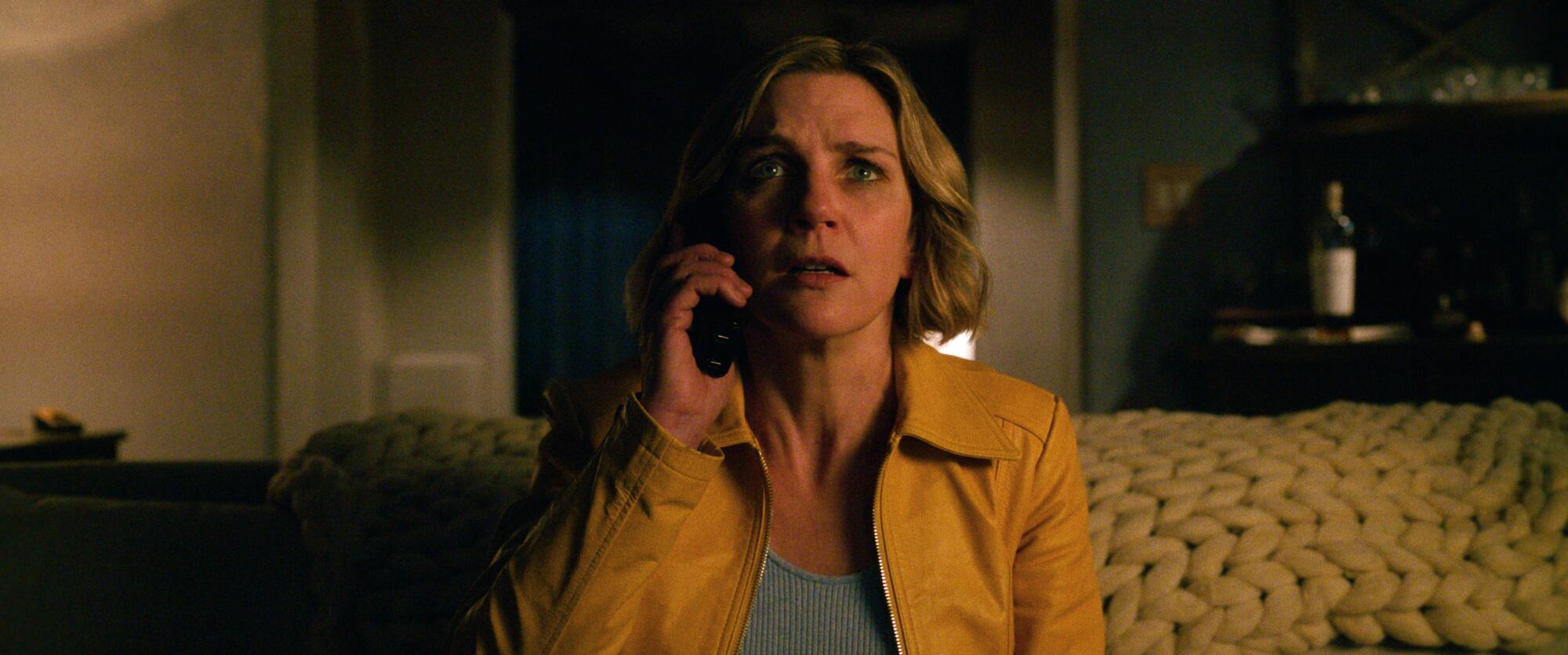“Who are you really? What is real happiness? What do you actually need for happiness?” Rhea Seehorn murmurs.
It’s an otherwise ordinary Wednesday afternoon, steps away from bookshelves stuffed with works like “East of Eden” by John Steinbeck and the “A Court of Thorns and Roses” series by Sarah J. Maas, when she casually lists these big life questions aloud while leaning over a vegan brownie and cup of tea at a small table inside Village Well Books & Coffee in Culver City. I’m still questioning whether I read the street parking signs correctly. But these are queries Seehorn has given hard thought to in recent months.
That’s what happens when you’re headlining a Vince Gilligan show. Existential reckonings are part of the gig.
Seehorn is at least familiar with the deep internal struggles that swirl within Gilligan’s protagonists. For six seasons on “Better Call Saul,” AMC’s hit prequel spinoff to “Breaking Bad” that told the backstory of Walter White’s smarmy lawyer Saul Goodman a.k.a. Jimmy McGill (Bob Odenkirk), Seehorn played Kim Wexler. The fan-favorite type A lawyer with a perfectly-positioned ponytail was McGill/Goodman’s principled but increasingly conflicted girlfriend who got caught up in his elaborate schemes and paid a price for his crimes.
In his first follow-up to the “Breaking Bad” universe, Gilligan opted to forgo revolving another series around a tormented man in favor of one that let the shades of Seehorn’s talent fill the screen.
Gilligan says that in “Better Call Saul,” which he co-created with Peter Gould, he saw in Seehorn what he had observed in Aaron Paul years before on “Breaking Bad” — an actor whose performance propelled a side character, wayward junkie Jesse Pinkman, into a figure that commanded viewers’ attention and became integral to the story.
“Aaron made that character indispensable,” Gilligan says over video call. “It was like déjà vu with Rhea Seehorn. I hate saying I wasn’t aware of her prior to us auditioning and casting her. But she was just fantastic from Day 1. What Peter and I saw in her was a potential to take a show that, at the beginning, was about one character and make it a two-hander. And I just knew very, very quickly in the early life of ‘Better Call Saul’ that I wanted to work with her again after it was over.”
So he set out to create a story where she was No. 1 on the call sheet.
How did Seehorn process that news?
“I just cried,” she says.
It’s not, as some may have hoped, a Kim Wexler spinoff — though, she’s still open to that: “I’ll do it. I’ll do it. Anything. A series. A film. A Staples commercial,” she says.
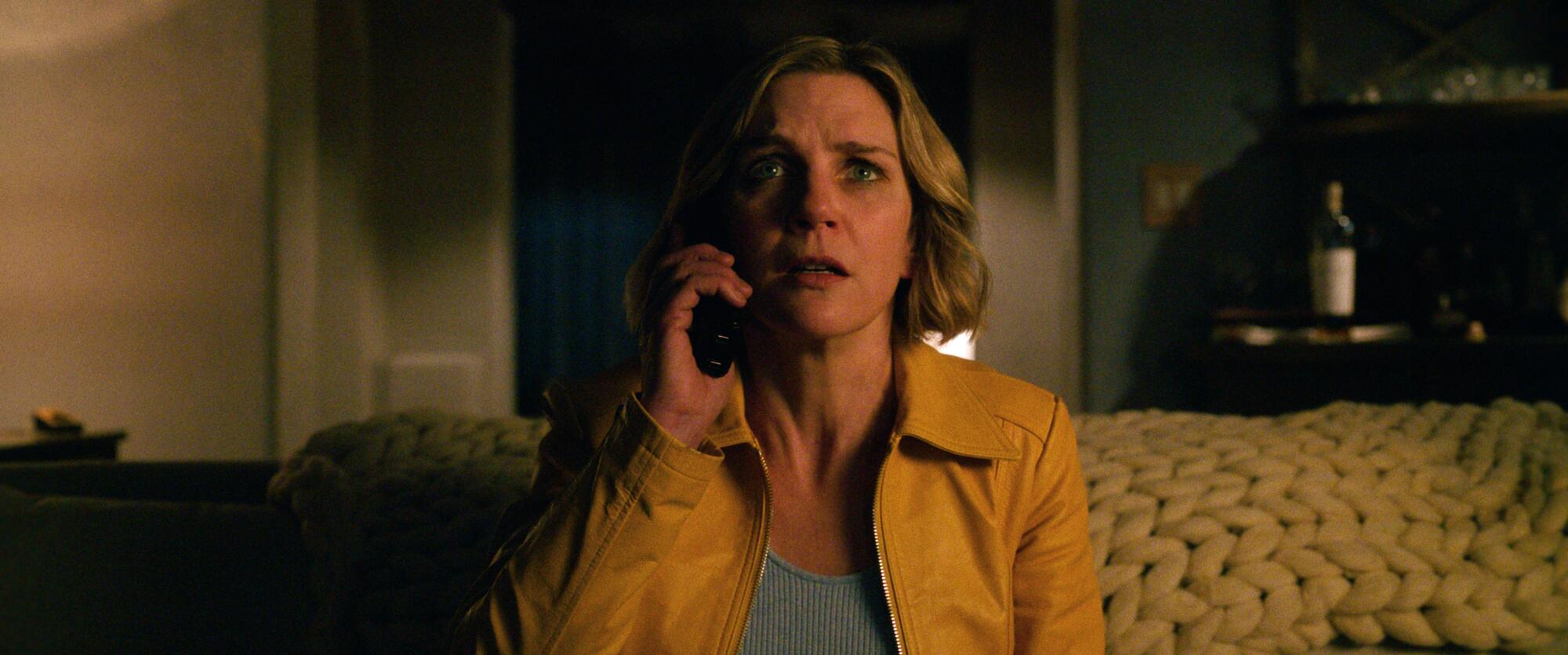
Rhea Seehorn as Carol in Apple TV’s “Pluribus.”
(Apple TV)
“Pluribus” has been a tightly-guarded project for Apple TV with a strict embargo on details that makes it difficult to provide a lot of context to its premise. Here’s what can be said: Seehorn plays Carol, a fantasy romance author who, despite a successful career and seemingly loving relationship with her partner, is described as “the most miserable person on Earth.” After a signal from space changes the world in a significant way, she must save humankind from happiness. The nine-episode drama premieres with two episodes on Nov. 7; new episodes will be released weekly after that.
For a while, Seehorn only had the first script to make her assessments about the world Gilligan was building. She eventually got her hands on two more before 2023’s dual Hollywood strikes kicked in. When she finished reading through them, one thought came to mind: “‘Wow, this is a lot of me,’” she says, launching into laughter. “He had warned me — ‘You’re going to be in almost every scene’ — but then you read it and you’re like, ‘Oh … oh.’”
Careful to be as vague as possible, she continues: “I can’t spoil it. There’s a lot of time I spend completely on my own. I’m not giving away anything am I? Make sure I’m not!” Aside from the way she has to be coy about the series, she’s appealingly unguarded in her enthusiasm for the journey it sent her on as an actor.
“‘Better Call Saul’ was its own animal, but it had the mothership,” she says. “With this, in our conversations, it felt like Vince wanted to push things to the limit — it’s genre-defying, tone-defying. It’s hilarious and then gut-wrenchingly upsetting. It’s scary in a variety of ways. It really makes you think: What would you do in this situation?”
Seeking to playfully lean into the show’s interest in exploring happiness and the human condition, in scheduling our meet-up I asked that Seehorn pick a location that makes her happy, which led us to this bookstore near her home. “I buy books constantly,” she says. Her most recent purchase was Rachel Kushner’s spy thriller “Creation Lake.” But lately, she’s been prioritizing William T. Harper’s book, “Eleven Days in Hell: The 1974 Carrasco Prison Siege at Huntsville, Texas,” which chronicles the true story of the standoff between inmates and law enforcement. At the time of this sit-down, Seehorn is days away from beginning production in Texas on a film adaptation of the book that will also star Taylor Kitsch and Diego Luna.
She lights up as the conversation veers into the stuff she watched to unwind while shooting “Pluribus”: “I’m obsessed with ‘Chicken Shop Date,’” she says. “Do you watch? Can we please use this article to get me on that show? This is my campaign.”
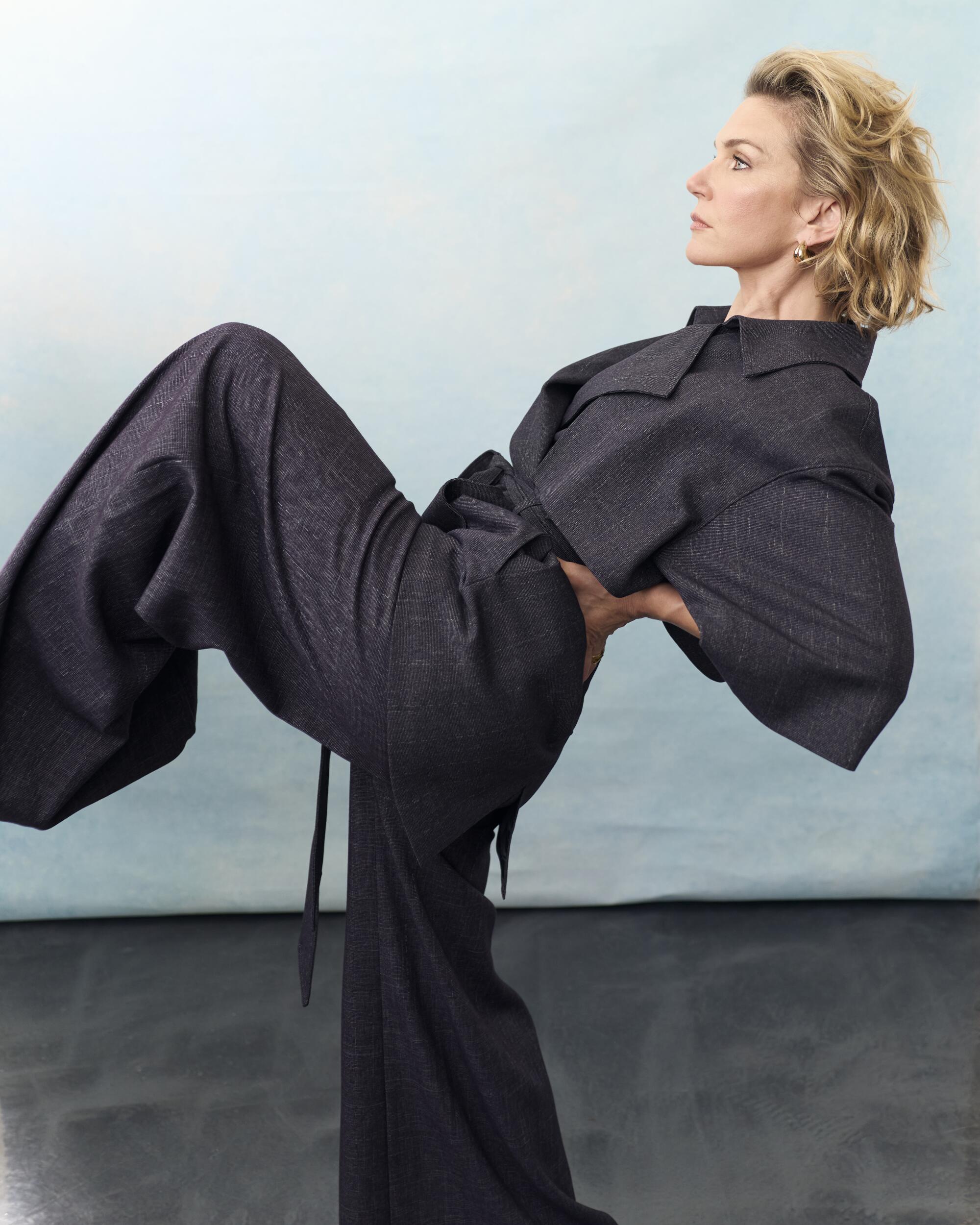
Rhea Seehorn, who stars in the new Apple TV series “Pluribus,” says the show is genre-defying: “It’s hilarious and then gut-wrenchingly upsetting. It’s scary in a variety of ways. It really makes you think: What would you do in this situation?”
(Anthony Avellano / For The Times)
She wrapped production on “Pluribus” last December. Since then, she‘s shot an indie film, “Sender,” with “Severance’s” Britt Lower, had a brief family vacation and helped the eldest of her two stepsons get settled in for his first year of college. They’re the kind of life moments, she says, that feed into those big questions discussed earlier and what the show confronts.
“It’s about this reckoning — a big exploration of who you are. It got me thinking about how we handle really difficult emotions,” Seehorn says. “There was a constant through line for me about this feeling of anxiety that we all know. When we have those nightmares where you’re running around telling everyone that the barn is on fire and they all keep saying, ‘It’s fine.’ And you’re screaming that it’s not.
“You find yourself thinking, how do I measure success?” she continues. “About everything — relationships, career, talent, ambition. There’s reasons we make armor, sometimes long-term, sometimes short-term. There are choices that are survival skills, that are good for you at one time, that later are no longer the crutches and tools they used to be. The performance Carol is giving at the beginning — where she hates the life she’s living and questions the people who like her work because it’s not impressive enough — Vince and I had some deep-dive talks about that as people in the arts.”
Of course, the philosophy of self and purpose and happiness was not something Seehorn considered much while growing up. Deborah Rhea Seehorn — she went by Debbie until her early teens — was born in Norfolk, Va., but spent her childhood in places like Arizona and Japan because of her father’s job as an agent for the Naval Investigative Service, later known as NCIS when it added “Criminal” to its name. “My dad was not Mark Harmon,” she jokes. After her parents divorced when she was 12, the family stayed in the Virginia Beach area.
On paper, Seehorn wasn’t primed for a life of acting. But she felt a creative pull: Her mother did musical theater in high school; her father and paternal grandmother painted. And Seehorn and her sister began sketching from a young age. Seehorn initially had ambitions of pursuing a career in design or art — she majored in painting while a student at George Mason University. She thought maybe she’d land a job doing exhibition design or art restoration at the Smithsonian or one of the other museums around town. But when she was required to take an elective course her freshman year, she saw an opportunity to try something that otherwise felt out of reach to her.
“At the time, at least to me, American television and film had people who looked like models,” she says. “I didn’t. I thought I would get made fun of mercilessly if I said I wanted to be an actor. It felt the same as saying I wanted to be a supermodel. But I knew immediately, with the first class I took, that acting was it for me.”
It was taught by Lynnie Raybuck, a teacher and actor who remains a mentor to Seehorn. This is where — in life and in this conversation — it becomes clear Seehorn revels in the technique of acting. She grows animated referencing Practical Aesthetics, the acting technique developed by David Mamet and William H. Macy for the Atlantic Theater Company, and detailing her fondness for in-depth script analysis.
“To me, it blew my mind the first time I realized that it isn’t magic fairy dust on some people — that they’re just talented and you’re not,” she says. “That there is a way to work toward that. As soon as somebody said there was a way to study that and there was a way to get closer and closer to inviting that audience in to go with you on a journey and make it believable, I just was like, ‘Well, this is what I’m doing for a living.’”
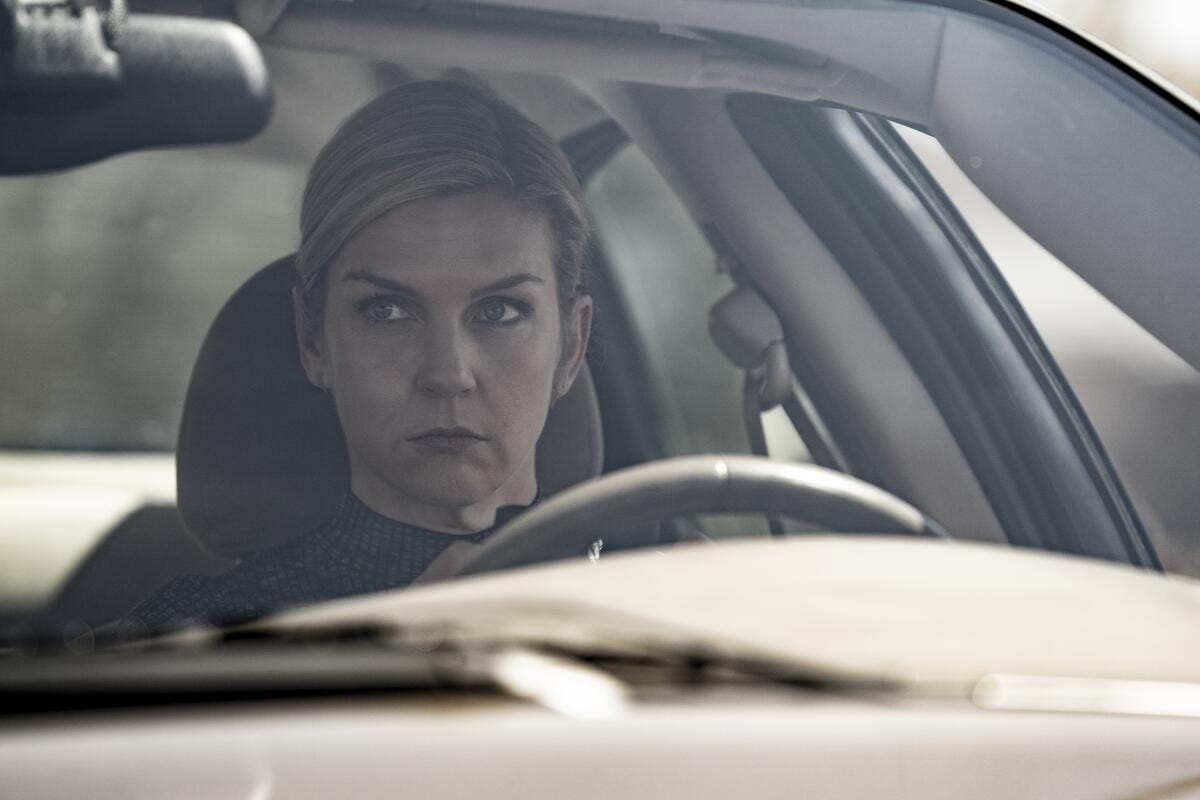
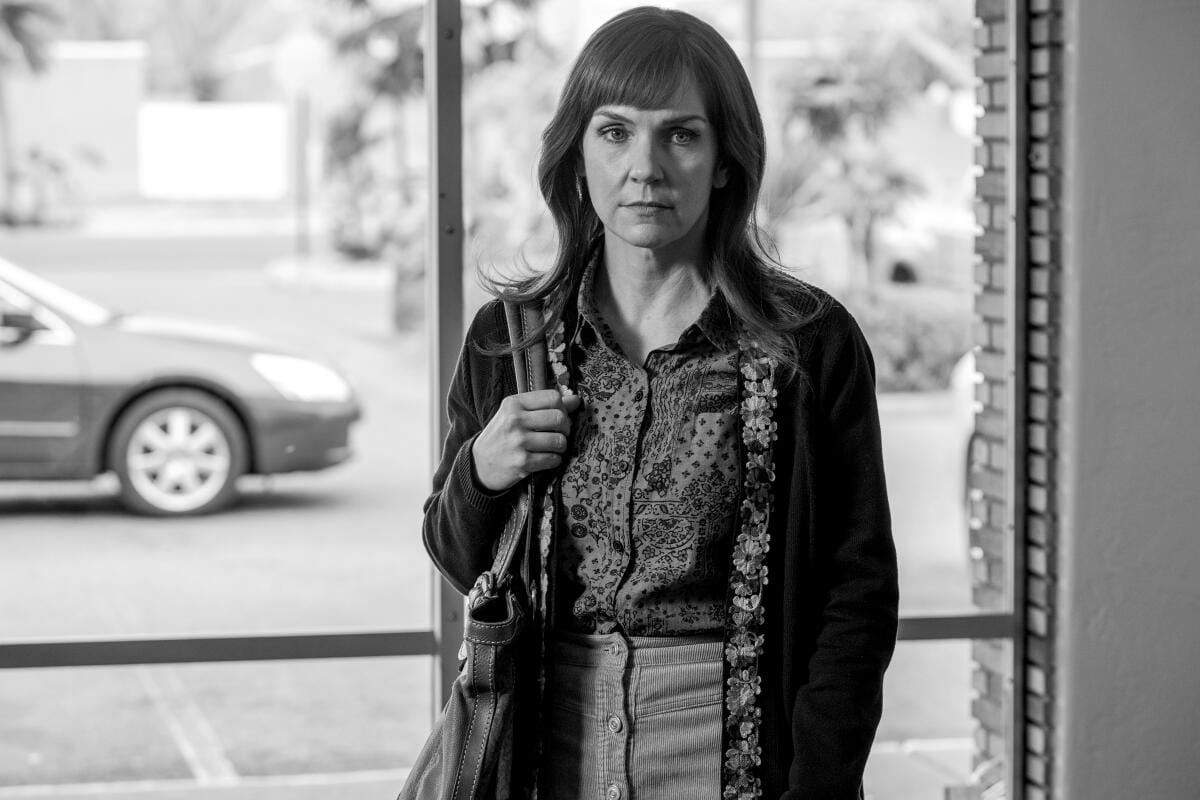
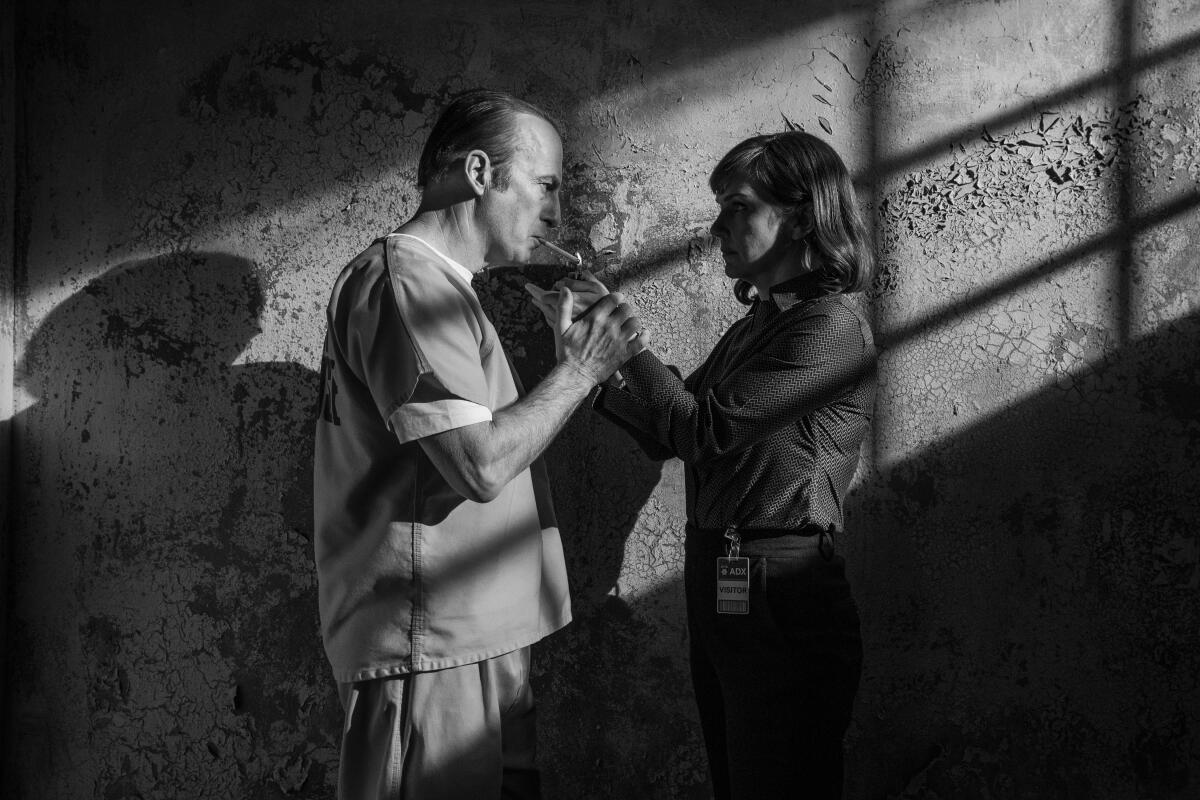
Rhea Seehorn starred as Kim Wexler opposite Bob Odenkirk’s Saul Goodman/Jimmy McGill in “Better Call Saul.” (Greg Lewis/AMC/Sony Pictures Television)
She knew it wouldn’t pay the bills right away. She ushered, worked the box office, read stage directions for new plays — she had days jobs, too, like working at TGI Fridays — “By the way, they just offered me suspenders since I never got them.” (She was underage and unable to serve alcohol at the time, so she was a hostess who did expo for the waiters.)
She eventually landed in New York, working at Playwright Horizons, an off-Broadway theater. After a few years, the pull of L.A. led her west. She was cast in the ABC sitcom “I’m With Her,” starring Teri Polo and loosely based on writer Chris Henchy’s marriage to Brooke Shields. It didn’t last long, but other roles would come along with varying degrees of steadiness. She had a recurring role as an assistant DA in the legal dramedy “Franklin & Bash” and played the best friend of Whitney Cummings’ fictionalized version of herself in NBC’s “Whitney,” which ran for two seasons from 2011 to 2013.
Then, as “Better Call Saul” was coming together, the casting directors working on the project were familiar with Seehorn, who had auditioned for them many times over the years, and what she could deliver.
“The first time I met her was for the producer sessions and there were three actresses who were reading for Kim with me,” Odenkirk says by phone. “The other two actresses were absolutely fantastic. But Rhea and I had chemistry, and we all knew it. We all felt it. It was undeniable and it was easy.”
She was cast as Kim, before a last name was even assigned to the character, and with no inkling for how essential she would become to the story. And it quickly becomes clear how she dissects her characters. (Both Odenkirk and Gilligan, without prompting, say that her scripts were often heavily marked up with scribbled notes, highlights and tabs.)
“I only have one line of dialogue in that first episode, other than the intercom,” Seehorn says, still able to recite it by memory. “They told me later it wasn’t on purpose that I have almost no contractions in the first couple of episodes and other people do. And I was like, should I ask them if it’s OK to elide ‘want to’ to ‘wanna’ or ‘do not’ to ‘don’t.’ But then I was like, ‘No! What if I just try to figure out who talks like this?’ It started to be this thing of ‘Who is this controlled person? And why would she be this controlled?’ She became so important to me because I had largely built her out of subtext and this private part of her that mostly the audience was my biggest confidant.”
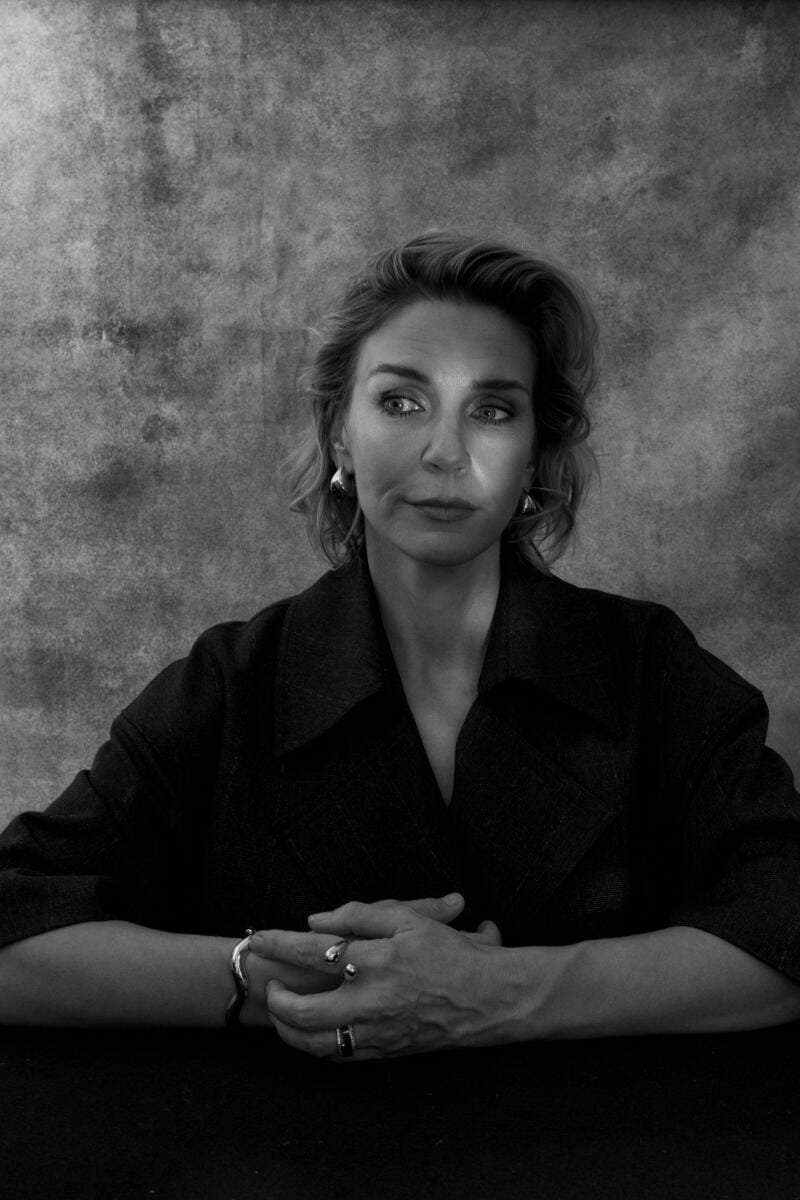
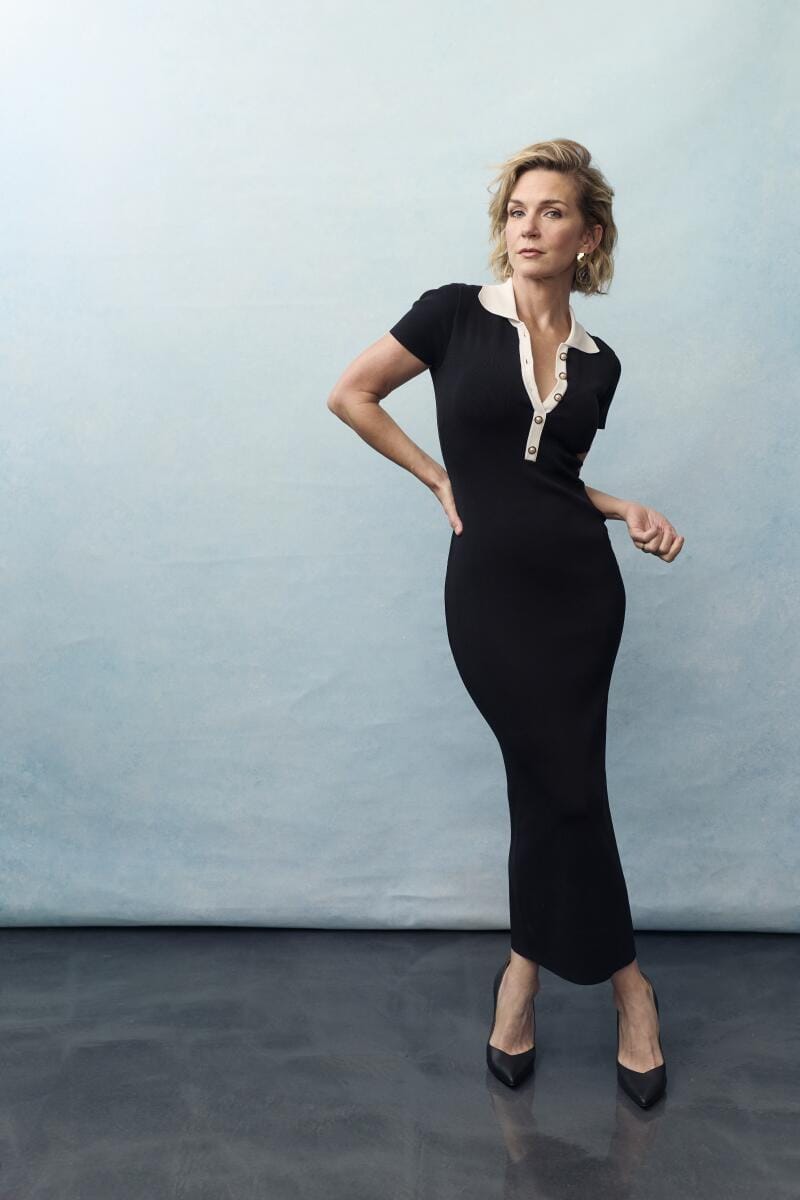
Rhea Seehorn on starting her acting career: “I thought I would get made fun of mercilessly if I said I wanted to be an actor. It felt the same as saying I wanted to be a supermodel. But I knew immediately, with the first class I took, that acting was it for me.” (Anthony Avellano/For The Times)
Odenkirk admiringly references Seehorn’s level of attention and their shared approach in defending the emotional intelligence of their characters. He notes the predicament the “Better Call Saul” writers sometimes faced in placing Jimmy/Saul and Kim, who knew each other so well, in dramatic situations that ordinarily would require more obliviousness or willing unawareness.
“When Kim and Jimmy were together, there were times — not many, but a few — where one of them was lying to the other one,” he says. “And it was always a challenge. We’d be like, ‘Saul knows he’s being lied to’ or ‘Kim knows Saul is lying.’ And we’d have to find a way around it. Or we’d have to let go — she’s [Rhea] good at that too … I just love her seriousness of purpose. And her love for losing herself in the dream.”
It’s why he’s not surprised Gilligan wanted her to lead his next series.
“She is formidable in nature,” Odenkirk says. “Her strength on screen is great, her dynamic range is incredible. She has the strength of character of a leading man — I’m just going to say it. She has the backbone and the steely determination of a leading man.”
In fact, when the idea for “Pluribus” began tugging at Gilligan years ago, in the midst of “Better Call Saul,” he initially envisioned it having a male protagonist.
“But I would take these long walks during our lunch breaks in the writers room and, I can’t remember when exactly, but it dawned on me on one of those walks that I really like this young lady, Rhea Seehorn,” he says. “She’s a really good actor. And I started thinking, ‘Why does the main character of my next show have to be a guy? ‘ I was about to say I kind of tailored the role to Rhea, but the truth is, I don’t know if that’s true. Rhea has so many strengths as an actor, I know she can do anything I threw at her — just like I knew many years before that Bryan Cranston could do anything. She makes it look easy.”
When Seehorn and I speak again a few weeks after our initial meeting, she is video-calling from a nondescript room during a break from production on “Eleven Days.” She has already fiddled through a number of jigsaw puzzles and “Paint by Numbers” — her activities of choice when she needs to turn down her actor brain — in the time since we last spoke; she reaches for the painting of plants she recently completed as proof. We eventually return to the idea of happiness. What makes her happy right now?
“It is my family and my friends, but it’s also my work,” she says. “Carol, on paper, has many of the things that I want, that many of us want. Success at work, especially in a career in the arts. But she won’t believe the hype. Her mocking of her work and her fans is just a mocking of herself. It’s self-loathing — like she’s trying to beat people to the punch.
“For me, I realized I fully own and will not be embarrassed about the fact that a third leg on that stool for my happiness is my work,” she continues. “It is intrinsically a part of who I am and I am a better mom to my stepsons and a better partner to my fiance because I get to do what I love.”
And she’s finding new ways to do more of it. She has become an executive producer on Katja Meier’s Swiss TV show “$hare” and made her episodic directorial debut with “Better Call Saul” — “I would like to try to direct again. There’s a couple of projects and people I’m talking to about directing on their show. People are like, ‘Why didn’t you direct the first season [of ‘Pluribus’]?’ I’m like,’I was trying to remember to brush my teeth with all I had going on.’”
She references the children’s book “Archibald’s Next Big Thing,” written by actor Tony Hale, whom she shared screen time with on “Veep.” It’s about embracing the journey you’re on.
“You’re constantly moving your goal post and all it is doing is just s— on yourself and where you are now,” she says. “Carol missed things until they were taken away. She could have stopped judging everything and judging herself.”
It was a reminder to embrace the freedom to think outside the box with her performance. The first episode is a high-wire balancing act; at one point, there’s a 12-minute stretch that has her character twisting through confusion, fear, grief, anger and frustration like pretzel dough being looped into a knot — on her own, yet not alone.
“Everything made me nervous about Carol,” she says. “As soon as Vince sent me the script, I was like, ‘This is bananas.’ You’re on your way to work and you just think, ‘What if I just took this off-ramp and I fled the scene and it would be all over?’ But then you’re like, ‘You know what, I’m gonna show up and do my best. Believe me, I did some takes that I’m sure were embarrassing, but I was just like, ‘When else are you going to try? The time is now.”
In other words, she says, “Don’t be a Carol.”
